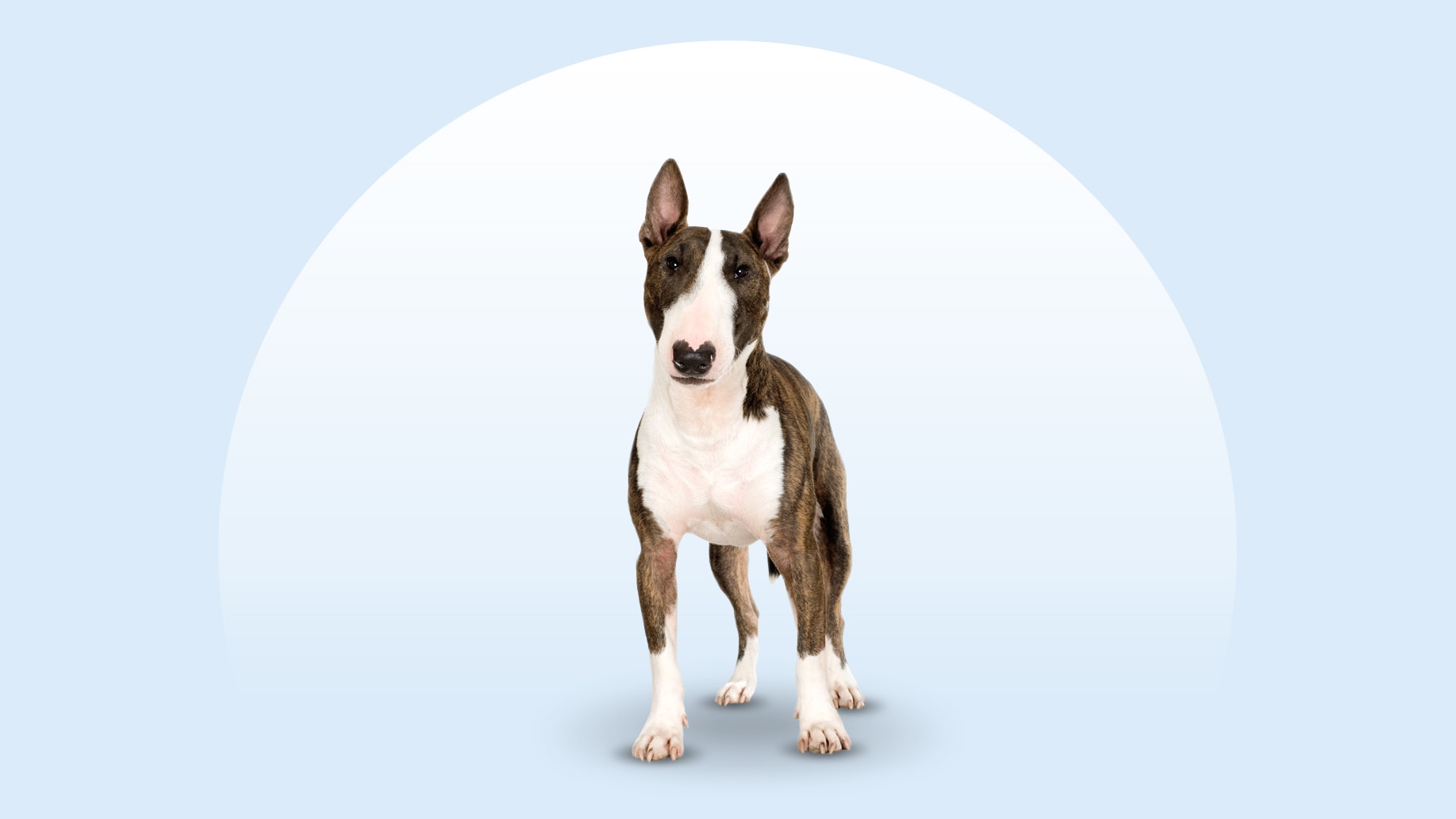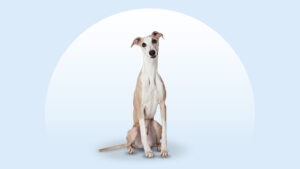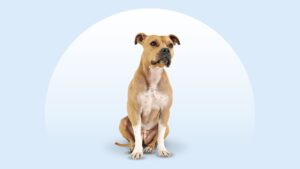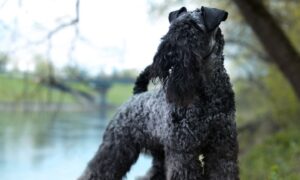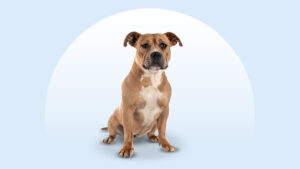Bull Terrier
Updated June 4, 2025
Bull Terrier
Updated June 4, 2025
Bull Terriers like to be the star in their pet parent’s life, so they usually do best as a one-pet act. Their unique appearance aligns with their role as the class clown (but don’t let them fool you—they’re as clever as they are funny). These unique dogs are here to give snuggles, make you laugh, and (with their love of exercise) keep you on the move, too.
Energized, Funny, Silly
50–70 pounds
21–22 inches
12–13 years
Black Brindle, Black Brindle and White, Black Tan and White, Brindle, Brindle and White, Red, Red and White, White, White and Black Brindle, White and Brindle, White and Red, White Black and Tan
If the Three Stooges added a fourth partner, the Bull Terrier might win the talent search. This class clown could be chasing their tail one moment, zooming at full speed the next, then crawling into your lap for a cuddle—right after they crash into the dining room table.
But just like a kid who’s a bit of a joker, these pups are much smarter than they sometimes let on. This fun, spirited canine will always keep you entertained, and they’re a great dog for someone who wants to liven up their life (and add an extra dose of snuggles).
Bull Terrier Characteristics
Bull Terrier Appearance
Bull Terriers are easy to recognize—it’s probably their adorable egg-shaped head that gives them away. Their dark eyes are reflective of their intelligent, inquisitive nature. Their coat can be a variety of colors and patterns, including white, black, black and white, tan, brindle, red, and fawn.
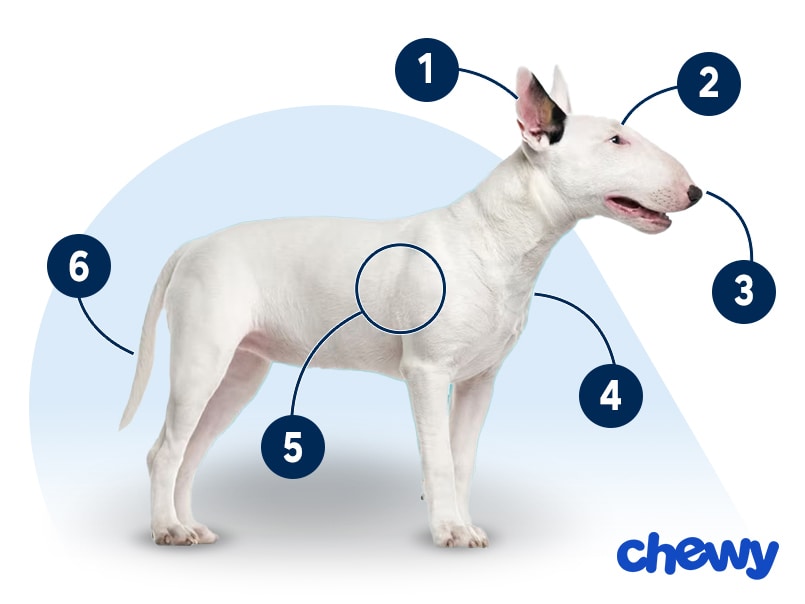
- Ears
The ears of a Bull Terrier puppy might be soft and floppy, but they perk right up to stand straight and pointed as they reach adulthood.
- Eyes
Their unusual eyes are triangle-shaped, dark in color, and close-set. Bull Terriers have a piercing and intelligent gaze.
- Nose
Their noses are black and curve downward at the tip.
- Coat Length
Bull Terrier coats are short and dense with a flat, glossy appearance. They may feel a bit rough to the touch.
- Coat Color
Bull Terriers are often white, but they can be a lot of other colors and patterns, too. Solid-white pups might have markings on their head. Other colors include black, black and tan, brindle, red, or fawn.
- Tail
Their tapered tail is short and set low.
Bull Terrier Temperament
Always up for a good time, a Bull Terrier loves to put on a show and snuggle up to you at the end of the day.
Boredom is the Bull Terrier’s biggest enemy. These pups have a lot of energy and a lot of smarts, so they need a dedicated pet parent who can give them an exciting life with adventure and possibility.
These lovable pups—with a larger-than-life personality—tend to be independent thinkers. So, if they’re not listening to you, it’s not for lack of intelligence. It’s likely a sign they’re bored—and you may need to step up your pet parent game: Think toys, hikes, or games. If you don’t entertain them, they’ll entertain themselves (and your living room furniture might not love it).
These clever dogs need a confident, experienced pup parent to help guide them toward their very best behavior. (It’s OK to let them think they’re in charge, as long as you’re the one who really is.) This all takes training and socialization, so you’ll need to be certain that you have the time to offer this eager pup.
In return, you’ll never be lonely again. The Bull Terrier has tons of love to give and will love to join you on daily walks and other fun activities. They’re not wallflowers—quite the opposite—and they’ll probably try to introduce you to everyone in the neighborhood.
How to Care for a Bull Terrier
Bull Terriers are relatively low-maintenance when it comes to grooming, thanks to their short coat that sheds only twice a year. You’ll need to spend your bonding time on exercise and training instead.
Grooming
Training
Diet
Exercise
Environment
Bull Terrier Health
The Bull Terrier lifespan is 12–13 years. Here are some health issues to be aware of.
- Deafness: Bull Terriers are prone to deafness in one or both ears. See your vet if you suspect your dog is having trouble hearing, and take heart in the fact that dogs who are hard of hearing usually acclimate very well and live full, happy lives.
- Heart issues: Bull Terriers can be prone to heart murmurs and mitral valve disease, where the heart doesn’t pump blood efficiently. If your pup has a murmur, your veterinarian will likely refer them to a veterinary cardiologist for an echocardiogram (ultrasound of the heart).
- Hereditary nephritis: Hereditary nephritis is a hereditary kidney disease that develops in Bull Terriers at a young age, though some may be born with it. The inflammation in the kidneys usually leads to kidney failure, though your dog may have many happy years before that happens. It’s usually treated with medication.
- Lens luxation: A medical emergency, lens luxation occurs when the eye lens falls out of its normal position. Symptoms include tearing up, squinting, cloudiness, redness, a change in pupil size, and/or a white spot in front of the iris. This painful condition can lead to glaucoma and blindness, so it needs immediate veterinary attention.
- Luxating patella: Bull Terriers can develop a luxating patella, where the kneecap slips out of place. You might notice that they do a little bunny hop or skip—this could be a symptom. It may be treated with supplements and meds, if mild, though surgery may be necessary.
Bull Terrier History
The history of the Bull Terrier begins in the early 1800s in Great Britain—and unfortunately, their lives didn’t start out so well. These sweet dogs were bred to be used in fighting rings (hardly a good fit for a canine who just wants to make their human happy).
Thankfully, that “sport” fell out of fashion, and the modern Bull Terrier was recognized by the American Kennel Club in 1885.
Not surprisingly, these goofy but intelligent pups are not scared of the limelight. It might be why Target’s mascot is a cheeky Bull Terrier named Bullseye. Author John Steinbeck and President Woodrow Wilson both had them as pets, too.
Bull Terrier puppies can cost anywhere from $1,200–$2,000. If you choose this route, pick a responsible breeder.
You can also adopt a Bull Terrier, as there are many out there already looking for their forever homes. Find your new best friend at a local Bull Terrier rescue, like the Bull Terrier Rescue Mission; at your local animal shelter; or via Chewy’s database of adoptable dogs.
